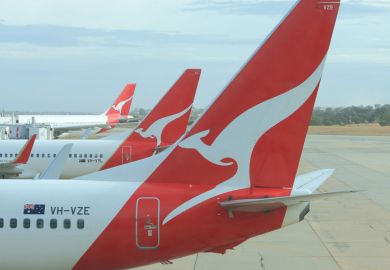Australian universities should brace for a “future shock” to their lucrative international enrolments, University of Melbourne researchers have warned.
A new paper argues that a crash in the number of Indian students late last decade illustrates the fate awaiting universities if something similar happens again. Such slumps can be sudden and prolonged, disproportionately affecting certain universities.
“The 2009 downturn in Indian student enrolments is a good example of how quickly and deeply a decline can affect budgets,” says the paper, published by the Melbourne Centre for the Study of Higher Education. “The speed of the reduction left institutional managers with little time to make up for the loss.
“Should a future decline in international enrolments occur at a similar pace, the speed and depth of its effects will take some universities by surprise...it might not be so easy for universities to avoid significant consequences.”
The study found that enrolments from the subcontinent had more than halved – from around 26,000 in 2009 to 10,000 in 2012 – after Indians were deterred by a “perfect storm” of a high Australian dollar, vocational education scandals and violent attacks against students.
Enrolments did not fully recover until 2016, costing Australian higher education an estimated A$1.3 billion (£720 million) in the process. Ten universities saw their Indian enrolments plunge by 60 per cent as about 12,000 fewer students signed up for management, commerce and information technology degrees.
The financial impacts were masked by rapid growth in enrolments from other countries, particularly China. Nevertheless, one university lost more than A$45 million in tuition income after its Indian student numbers crashed by almost 90 per cent.
The paper says Indian students’ fees had accounted for up to 17 per cent of one institution’s annual income. While declining to name it, lead author Gwilym Croucher said that it had been “an extreme case”.
“That university had a lot of management and commerce students from India. Obviously, they didn’t after 2009. It shows you how dependent institutions can be,” he said.
Dr Croucher said that Australia’s university system relied on international student dollars. He said the Chinese market was so large that it would be difficult to replace it with any country, or even a small group of countries.
But Australian universities had been left with few alternatives to expanding their foreign enrolments, because it was the only way they could increase their revenue – and they had proved very successful at it.
“There’s a long history of universities going out and developing these markets, so to some extent they have come to expect it. It’s beholden on the sector to think about what innovations to make so they’re able to be a first mover again.”
He said universities could “future proof” by anticipating international students’ needs in 10 or 20 years. “In a world where students are looking for different types of courses – ones with a lot of online and technologically driven components – one of the things we can do is think about how we can best meet that early.”
He also backed University of Queensland chancellor Peter Varghese’s proposal that universities quarantine international education profits in a future fund. “There’s merit in the sector getting together and thinking of creative ways to weather some unforeseen shock to the system.”
Register to continue
Why register?
- Registration is free and only takes a moment
- Once registered, you can read 3 articles a month
- Sign up for our newsletter
Subscribe
Or subscribe for unlimited access to:
- Unlimited access to news, views, insights & reviews
- Digital editions
- Digital access to THE’s university and college rankings analysis
Already registered or a current subscriber?








